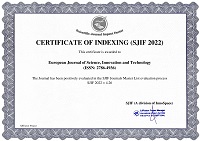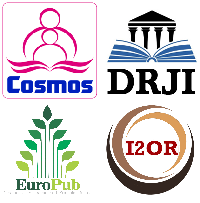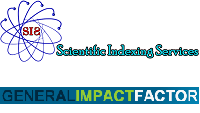Quality Health Information for Health Annual Work Plans in Implementing Strategic Plans to Reduce Maternal Morbidity and Mortality, Migori County, Kenya
Abstract
It is important to determine quality of health information for supporting health annual work plans in implementing strategic plans to reduce/prevent maternal morbidity and mortality in the four study health facilities in Migori county; County referral, St Joseph mission, Rongo Sub County referral and Isebania county hospitals. The study used cross-section design. The sample frame population was 260 and the sample size was 155 determined by Cochran method. Data were collected using closed ended questionnaires and were analyzed using statistical package for social scientists (SPSS). The methods of analysis of data were descriptive. Results were presented in charts and percentage tables. In the four facilities data were collected from healthcare workers and analyzed to determine quality of health information to support annual plans in implementing strategic health plans. The study results revealed that the most used system was electronic; 86% at St Joseph mission hospital while Migori county referral hospital was 40%. Routine health information software (RHIS) was most used ranging between 54% and 92%. Then analytic software knowledge among healthcare workers was 28% and electronic health records (EHR) 19%. Achievements in midwifery training were 93%, health information systems 61%, data analytics 28% and data quality improvement training covered 68%, and financial support 17%. The use of electronic health records was highly limited and yet it is key to quality data, information and healthcare services. Therefore, there is high need for investment as county in electronic healthcare systems including healthcare data framework to improve information quality.
References
Altuwaijri, M. M., Bahanshal, A., & Almehaid, M. (2011). Implementation of computerized physician order entry in National Guard Hospitals: assessment of critical success factors. Journal of Family and Community Medicine, 18(3), 143-151.
DHS. (2014).
Durand, A. M. (2010). Quality improvement and the hierarchy of needs in low resource settings: perspective of a district health officer. International Journal for Quality in Health Care, 22(1), 70-72.
Holden, R. J. (2011). What stands in the way of technology-mediated patient safety improvements? A study of facilitators and barriers to physicians’ use of electronic health records. Journal of Patient Safety, 7(4), 193-203.
Kang’a et al. (2016). Migori county mostly uses DHIS2 for secondary data collection and analysis and primary data collection for HIV data are Kenya EMR, OpenMRS, IQcare in facilities.
Kim, E., Rubinstein, S. M., Nead, K. T., Wojcieszynski, A. P., Gabriel, P. E., & Warner, J. L. (2019, October). The evolving use of electronic health records (EHR) for research. In Seminars in radiation oncology (Vol. 29, No. 4, pp. 354-361). WB Saunders.
Kintu, P., Nanyunja, M., Nzabanita, A., & Magoola, R. (2005). Development of HMIS in poor countries: Uganda as a case study. Health Policy Dev., 3(1), 46–53.
Manya et al. (2016). Digital Health Atlas for ongoing monitoring of HIS implementations in Kenya.
Ministry of Health Kenya [MOH]. (2019). Health information systems.
Najafabadi, A.T. (2009). Applications of GIS in Health Sciences. Shiraz E-Medical Journal, 10(4), 221–230.
Rezae, P., Ahmadi, M., & Sadughi, F. (2007). Comparative study on EHR content, structure, and terminology standards in selected organizations and design a model for Iran. Journal of Health Administration, 10(29), 55-64.
WHO (2014). Maternal Mortality. Fact Sheet.
WHO/UNICEF/UNFPA/World Bank (2007). Maternal mortality. Estimates. Geneva.
Yost, J., Dobbins, M., Traynor, R., DeCorby, K., Workentine, S., & Greco, L. (2014). Tools to support evidence-informed public health decision making. BMC Public Health, 14, 728.
Copyright (c) 2025 Wilfred Obwocha

This work is licensed under a Creative Commons Attribution 4.0 International License.


 ISSN
ISSN 











